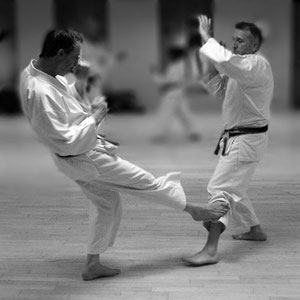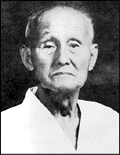What is Wado Ryu karate?
Wado Ryu karate is both faster and lighter than some other popular styles. Power is developed through the proper application of technique rather than muscular strength, making it suitable for
both sexes and a wide range of ages and physiques.
Wado Ryu embodies the principle of tai sabaki – body movement. Using tai sabaki in Wado Ryu we avoid an incoming attack rather than meet it head-on. The uchi in Wado is more of a
deflection/redirection that prepares for a swift counter-attack. This is quite different from the hard blocks and tram-line moves seen in other styles.
A proficient Wado practioner is fast and powerful with an economy of movement and energy use.
Wado Ryu is not just the punches and kicks of traditional karate but also incorporates locks, sweeps, throws and disabling techniques. It is a very effective martial art and has many practical
applications in self-defence.


Hironori Ohtsuka (1892-1982)
In 1898, when Hironori OHTSUKA was only six years old, he began practising Ju Jitsu (Shinto Yoshin Ryu style).
At 19 he entered the Waseda University and started training in atemi style kempo in addition to his regular training in Ju Jitsu. In 1921 he celebrated his 29th birthday by taking over the
mastership of the Shinto Yoshin Ryu school.
In 1922 Ohtsuka Sensei introduced himself to the karate master Gichin Funakoshi who welcomed him warmly. This was to be the start of a long and close friendship between the two. From that moment
on, ideas on how to adapt his atemi techniques to karate were constantly on his mind.
It was not until 1940 that Ohtsuka Sensei finally devised the name of our style, WADO RYU, meaning ' the way of harmony'. The atemi (striking) and nage waza (throwing techniques) of Ju Jitsu have
had a strong influence in the formation of Wado Ryu Karate. As it exists today the Wado system is a culmination of a life time’s work by its founder.







